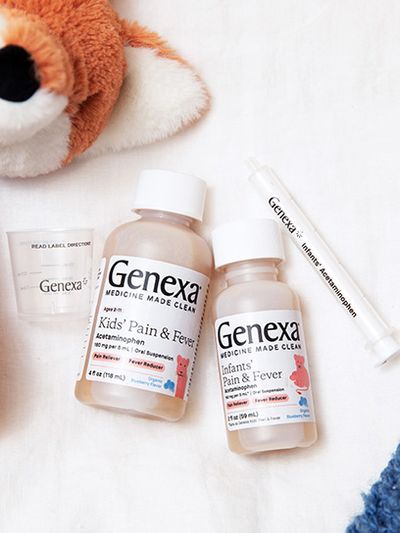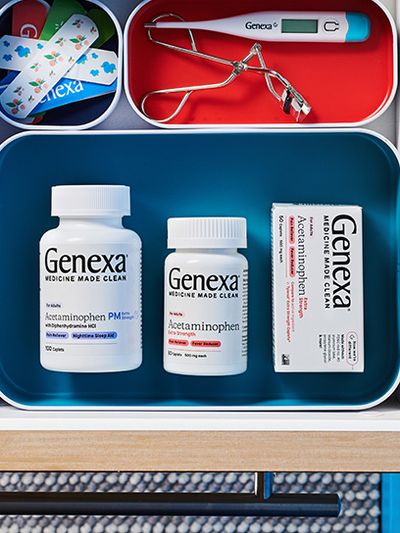What Is A Sinus Flush?
Everything You Need To Know About Sinus Care
Table of contents:
If you struggle with clogged sinuses and are looking for a simple, at-home remedy, then a sinus flush might be right for you. This article will provide an overview of how to safely perform a sinus flush at home and the benefits of this treatment method.
What Are Sinuses?
Before discussing the sinus flush more, it is important to cover the basics of sinuses. Your sinus cavities are a system of hollow cavities that are connected within the skull. The largest sinuses are the maxillary sinuses which are about an inch across, and there are smaller sinuses in various areas of the face.
There are four groups of sinuses in your face that include:
- The maxillary sinuses located on each side of the nose below the cheeks
- The frontal sinuses located in the low, central part of your forehead
- The ethmoid sinuses located between the eyes and around the bridge of the nose
- The sphenoid sinuses in the bones behind your eyes
All of your sinuses are lined with mucosa, which is a soft, pink tissue. Other than a thin layer of mucus, your sinuses are usually empty when you are healthy. However, when you have a virus or bacterial infection, your sinuses can become inflamed, which can stop them from draining properly.
What Happens To Your Sinuses When They Are Infected?
When you have a sinus infection, your nasal cavities become infected, inflamed, or swollen. The most common symptom of a sinus infection is pain in your sinuses, which can feel like a dull ache and possibly lead to a headache. You might also experience nasal drainage in the form of cloudy or green mucus. Inflammation in the sinuses can contribute to nasal congestion.
What is a Sinus Flush?
A sinus flush is a home remedy that typically contains a saline, or salt, solution. It can be useful if you have clogged or infected sinuses because it allows you to rinse out your nasal passages. The goal of a sinus flush is to open your nasal passages, remove mucus that is too thick to simply blow out, and remove any contaminants or allergens.
Other names for a sinus flush include nasal rinse, sinus rinse, nasal irrigation and neti pot treatment. Nasal irrigation originated in Ayurvedic medicine thousands of years ago and has been practiced ever since. One of the greatest benefits of a sinus flush is that it requires few ingredients and can be done almost anywhere.
When Should I Do A Sinus Flush?
You can do a sinus flush at home when you are experiencing any of the following upper respiratory problems:
- Common cold
- Allergies
- Chronic sinusitis
What Do I Need For A Sinus Flush?
Before you do a sinus flush at home, make sure you have access to the following:
- Pure salt
- Sterile water
- Baking soda
- A neti pot, nasal syringe, bulb syringe, or saline irrigation device
How Often Should I Do A Sinus Flush?
If you have nasal congestion due to a cold or allergies, you can do a sinus flush occasionally. It is best to start with a daily sinus flush if you are experiencing sinus symptoms. If that is not providing enough relief, you can do a sinus flush up to three times a day.
Although it can provide temporary relief, it may be better to use other methods to prevent chronic sinus problems other than a regular or daily sinus flush. It is not advisable to incorporate a sinus flush into your daily routine because it may hinder the protective barrier of the mucous membrane lining your nasal passages and sinuses.
How Can I Safely Do A Sinus Flush?
One helpful at-home treatment for a sinus infection or clogged sinuses is nasal irrigation. Nasal irrigation has been shown to be helpful in treating both acute and chronic sinusitis. There are a series of steps you should follow to properly execute a sinus flush.
- First, you should make a saline solution. To do so, you have to mix 8 ounces of warm, sterile water (think distilled or boiled) with 3 teaspoons of iodide-free, pure salt and 1 teaspoon of baking soda. This mixture will create an isotonic solution.
- Stand over a sink or in the shower and tilt your head to one side. Try to ensure that your chin and forehead are level so that water does not get into your mouth.
- Using your neti pot, nasal syringe, or irrigation bottle, squeeze or pour some of the saline solution into the upper nostril. Make sure you do so slowly and in a controlled manner.
- Wait as the solution pours out of the opposite nostril and into the sink or shower. For the duration of this step, make sure you are breathing through your mouth.
- Repeat steps 3 and 4 on the other side.
- Make sure to tilt your head at the correct angle so that water does not fall down the back of your throat.
- Blow your nose into a tissue after you repeat the process in each nostril. Blowing your nose will help remove any leftover mucus.
Tips For A Successful Sinus Flush
Although it is easy to do a sinus flush on your own, there are a few tips you should keep in mind when doing one to make sure that it is both safe and successful.
- If you want to make your own saline solution, you can purchase over-the-counter saline packets. Using these packets is the best way to ensure that you are using pure, iodide-free salt (sodium chloride) for your sinus flush.
- Make sure that the water you use is sterile. The best way to do so is by bringing water to a boil for at least a minute before using it. Boiling the water will kill any microorganisms in the water that could be harmful. One such microorganism is the amoeba Naegleria fowleri. This amoeba can make its way from the sinuses to the brain, which could lead to a fatal infection. After you sterilize the water, let it sit for a few minutes to cool before you make your solution. You can also use distilled, filtered, or bottled water.
- Do not use tap water, cold water, or very hot water.
- Wash your hands before the sinus flush to remove any dirt or germs.
- If your saline solution looks to be cloudy, dirty, or in any way not clear, throw it away and make a new one.
- Do not perform a nasal flush on infants.
- Always clean the neti pot, nasal syringe, or irrigation bottle before and after the sinus flush.
- If you feel more discomfort than relief after a sinus flush, try making your solution with less salt.
Are There Any Risks Associated With a Sinus Flush?
Infection is the primary risk associated with performing a sinus flush. If you do not clean the instrument you use to perform the sinus flush or you use non-sterile water to make the solution, you may be at risk for infection.
When microorganisms enter the nasal cavity, you are at risk for conditions such as amoebic meningitis. You might have amoebic meningitis if you experience:
Once the infection progresses, you may experience:
- Seizures
- Hallucinations
- Problems with coordination
- Altered mental status
- Coma
Although the risks associated with a sinus flush may sound extreme, it is important to remember that if you use sterile water or boil water before making the solution, you should be able to kill all microorganisms and eliminate the chance of infection.
There are also other risks associated with nasal irrigation. If you experience mild discomfort after performing a sinus flush, you might have irritated your nasal passages or used water that was too hot or cold.
Additionally, if you do not tilt your head at an angle to allow the water to properly drain, it might pool in your sinuses and cause a dull ache until it drains fully. It’s also possible to experience ear pain after doing a sinus flush.
Other minor side effects of a sinus flush include:
- Nasal irritation
- Nosebleeds
- Sneezing
- Sensation of fullness in the ears
Does Nasal Irrigation Work?
Nasal irrigation has been shown to be effective for improving the symptoms of sinus infections, nasal congestion, and allergies. It is thought that nasal irrigation is most beneficial for treating the symptoms of sinus infections and improving the overall quality of life for people with chronic sinusitis.
Conclusion
A sinus flush is a method of clearing, moisturizing, and unclogging your nasal passages when you have a sinus infection, cold, or seasonal allergies. In order to perform a sinus flush, you need sterilized water, pure salt, and an instrument to get the solution into your nose. Although it is very easy to perform at home, it is important to remember to properly prepare the saline solution when you do a sinus flush.
Make sure that the water is sterile and the salt is pure salt when you make the solution for a sinus flush so as to avoid infections. Although there are some minor negative side effects associated with nasal irrigation, if the solution you use is sterilized, there are no large risks. It is also a proven way to relieve the symptoms of a sinus infection and improve the overall quality of life of people with chronic sinusitis.






